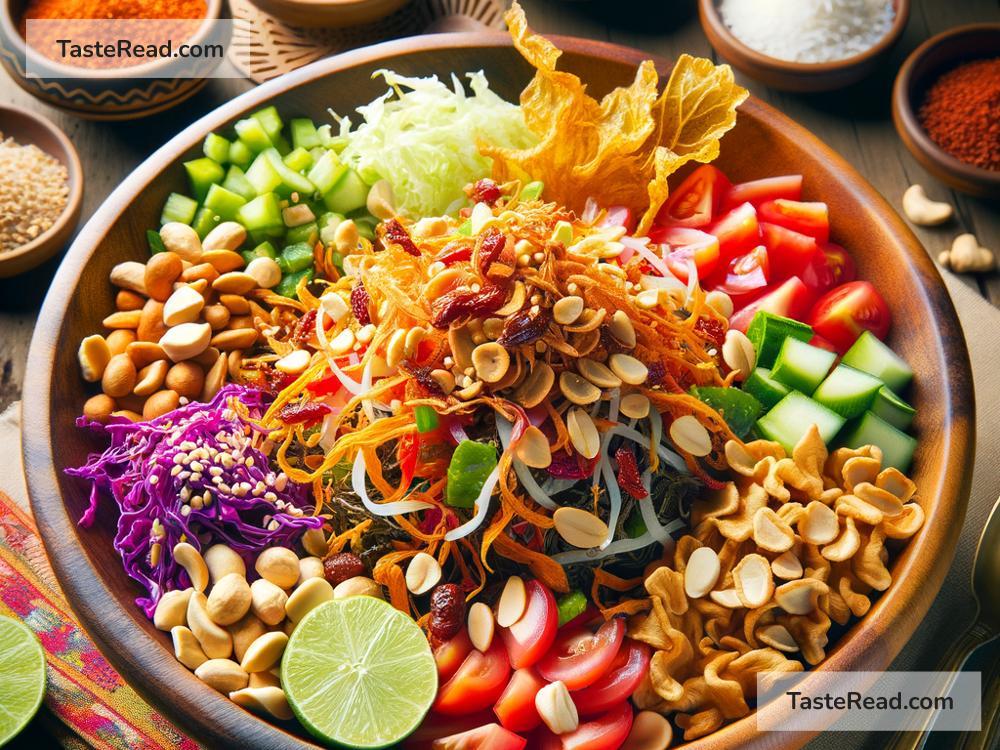Discovering the Traditional Roots of Burmese Tea Leaf Salad
Burmese cuisine is filled with unique and delicious dishes, but one of its most fascinating creations is the tea leaf salad, locally known as laphet thoke. This dish is not only flavorful but also deeply rooted in Myanmar’s history, culture, and traditions. In this blog, we’ll explore the origins, ingredients, and cultural significance of Burmese tea leaf salad in a simple yet engaging way.
A Dish with Deep Cultural Roots
Tea has long been an important part of Myanmar’s culture. The country is one of the few places in the world where tea leaves are not just brewed into drinks but are also eaten. The tradition of consuming fermented tea leaves, known as laphet, goes back centuries. According to legend, laphet dates back to the days of Myanmar’s ancient kingdoms, possibly as early as the 11th century.
For many generations, fermented tea was used as a symbol of peace during negotiations and ceremonies. When two parties reached an agreement, a bowl of laphet was often shared to seal the deal. This legacy highlights the dish’s cultural significance, extending far beyond its culinary appeal.
Laphet itself is considered a treasure. In Myanmar households, fermented tea leaves are stored carefully, ready to be served to guests as a sign of hospitality. Over time, these preserved tea leaves were mixed with other ingredients to create what we now know as the beloved tea leaf salad.
What Makes Tea Leaf Salad Special?
What sets tea leaf salad apart is its bold and vibrant flavors. While many salads around the world focus on fresh, raw vegetables, laphet thoke uses a mix of fermented tea leaves and crunchy toppings to create a unique combination of textures and tastes.
The core ingredient, fermented tea leaves, is tart, earthy, and slightly bitter, which gives the dish its distinct flavor. Traditionally, these leaves are fermented using a special process that involves steaming, blending, and preserving them in airtight containers. This process gives the tea leaves their rich and complex taste.
To make laphet thoke, the tea leaves are mixed with a variety of other ingredients, which add layers of flavor and texture to the dish. Common toppings include:
- Crispy fried garlic: Adds crunch and a savory aroma.
- Peanuts and beans: Bring nuttiness and texture.
- Sesame seeds: Add a hint of toasty flavor.
- Dried shrimp: Provides umami and depth.
- Tomatoes: Add a juicy, fresh element to balance the richness.
- Cabbage or greens: Contribute a refreshing crunch.
- Chili flakes: For heat and spice.
- Lime juice: Brings acidity and brightness to lift the overall flavors.
These ingredients are tossed together with a touch of oil and sometimes fish sauce to finish the dish. The result is a delightful balance of sour, salty, spicy, and bitter notes, making it the perfect example of how layered and harmonious Burmese cuisine can be.
A Community Affair
Tea leaf salad is more than just food—it’s an experience. In Myanmar, it’s often shared among friends and family, especially during gatherings or casual meals. Its preparation can involve sitting together, chatting, and mixing the ingredients in a communal fashion. Each bite feels like a celebration of Myanmar’s flavors, culture, and people.
The dish is also very flexible. Every household has its own variation, and families often add or substitute ingredients based on their preferences or what they have on hand. Some like it extra spicy, while others prefer it with more nuts or garlic. This diversity adds a personal touch to the dish and represents the creativity of Burmese cooking.
A Global Favorite
Today, tea leaf salad has traveled far beyond Myanmar’s borders. It is increasingly popular in restaurants worldwide, thanks to its unique taste and cultural significance. People who try the dish for the first time are often surprised by how different it is from typical salads.
In recent years, food enthusiasts have made efforts to introduce Burmese cuisine to the global audience, and tea leaf salad stands at the forefront of this movement. Some restaurants even offer modern twists on the classic recipe, incorporating new flavors while keeping the dish’s traditional spirit intact.
How to Enjoy Tea Leaf Salad
If you’re curious to try Burmese tea leaf salad, you can find the fermented tea leaves in specialty Asian markets or online stores. Making it yourself can be a fun and rewarding experience, allowing you to experiment with the flavors and textures to suit your tastes.
However, many Burmese restaurants also serve this iconic dish, so you can enjoy it in a more authentic setting. Pair the salad with other Burmese staples like Mohinga (fish soup noodle) or Shan noodles for a complete culinary adventure.
Conclusion
Burmese tea leaf salad is more than just a dish—it is a piece of Myanmar’s history and culture. Its bold flavors, unique ingredients, and importance in social gatherings make it a meal to remember. Whether you’re exploring Burmese cuisine for the first time or already a fan, laphet thoke is a must-try dish that offers a taste of tradition and the story of a rich culinary heritage.
So, why not bring a little piece of Myanmar to your table? Discover the magic of tea leaf salad and savor the blend of history, culture, and unforgettable flavors!


